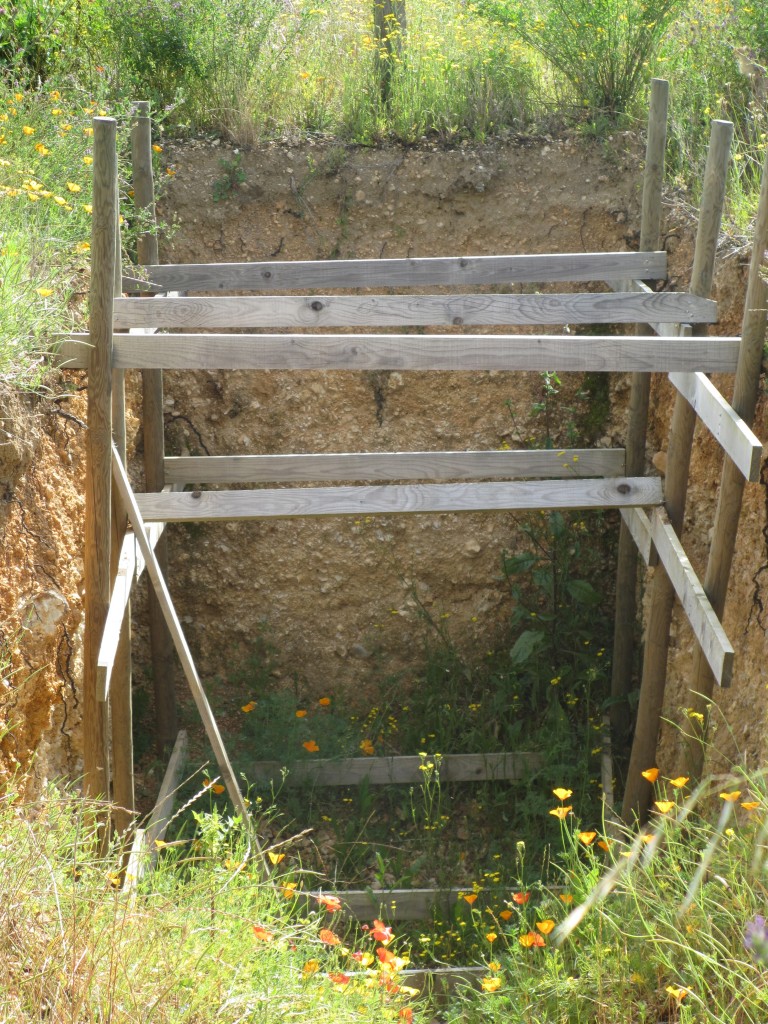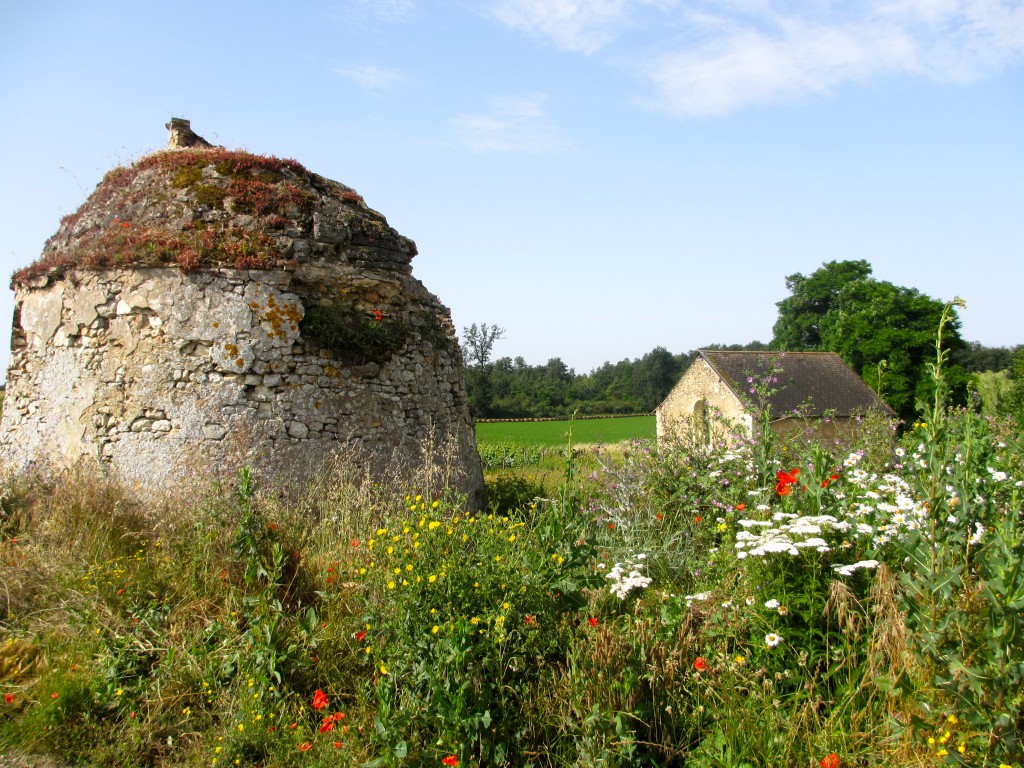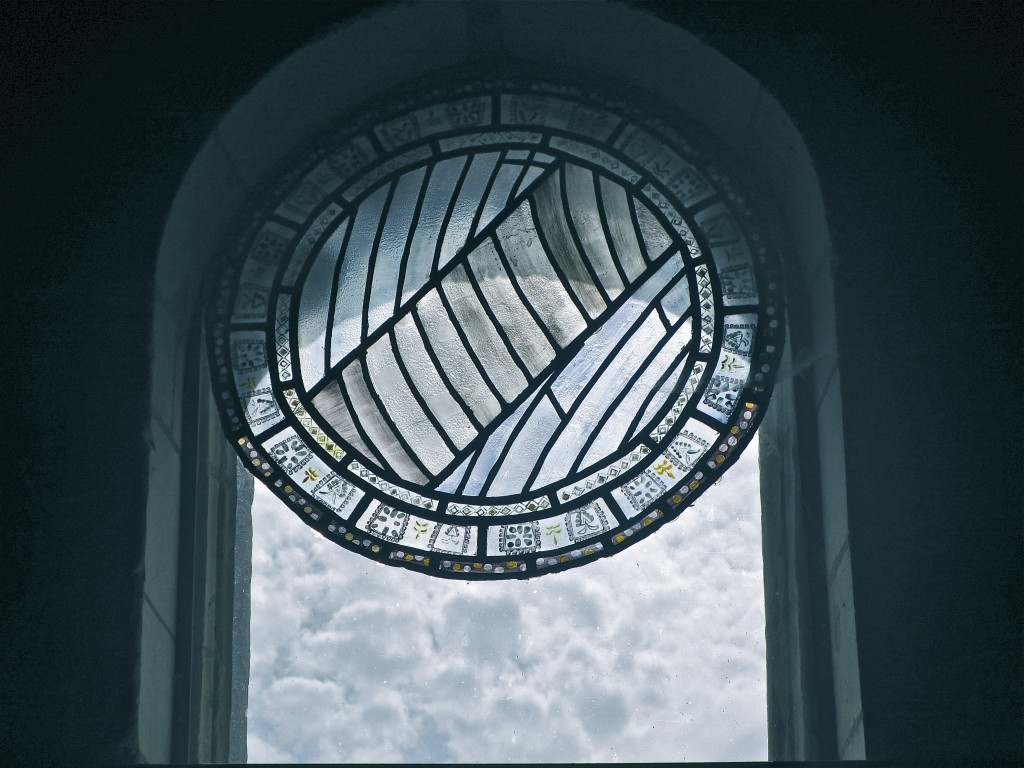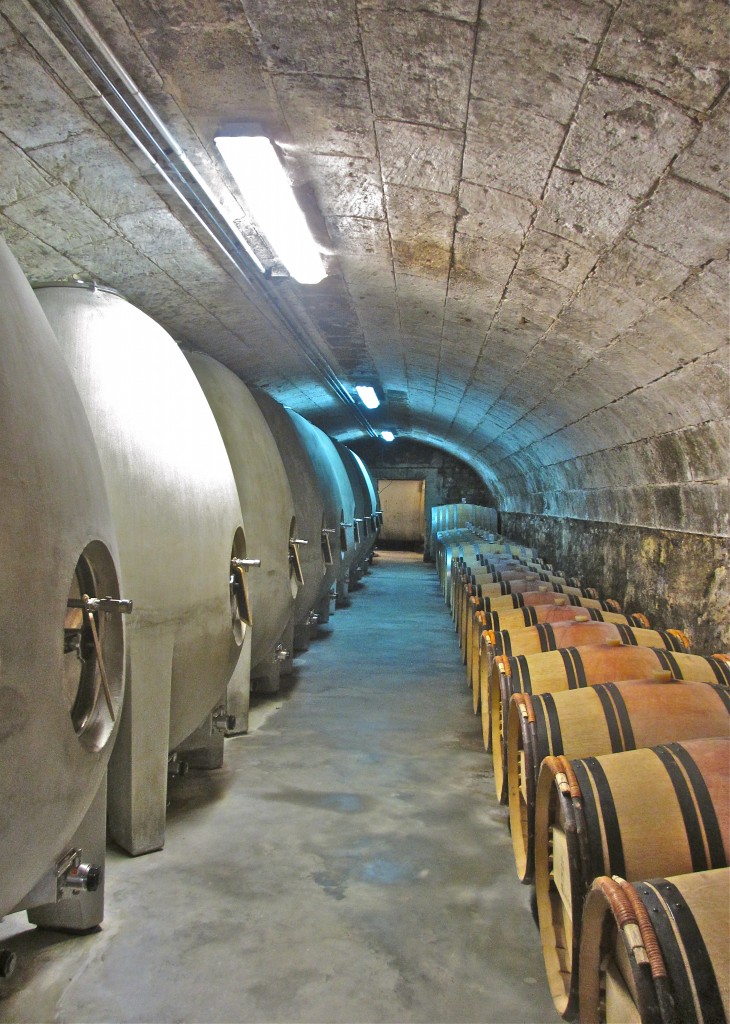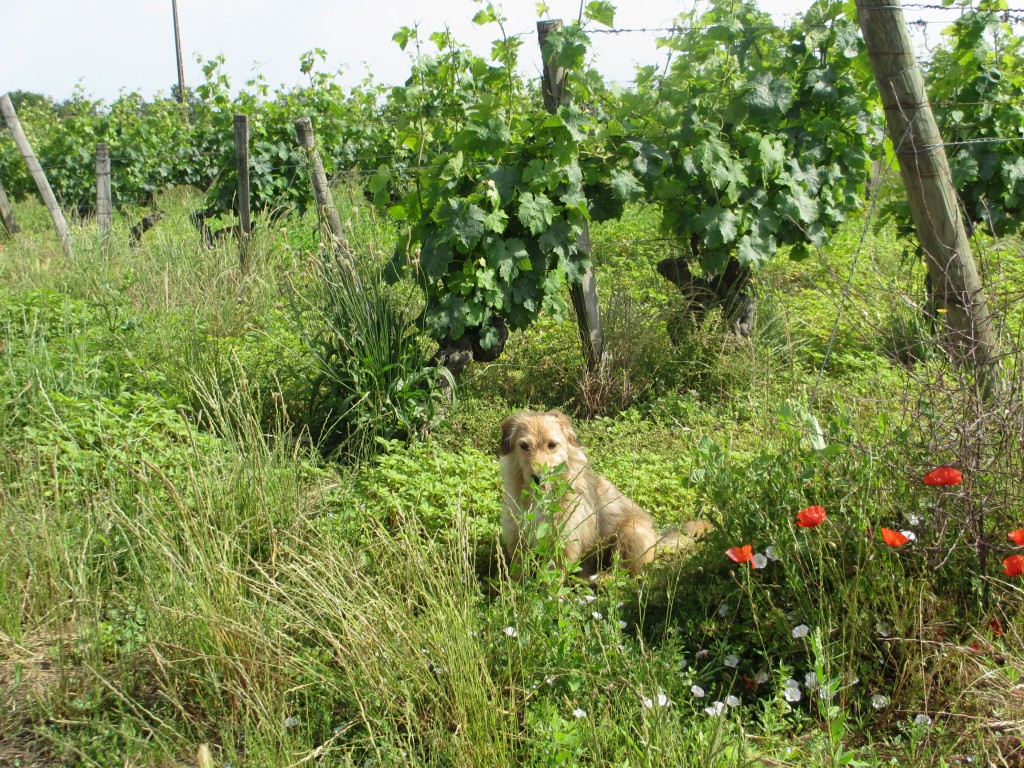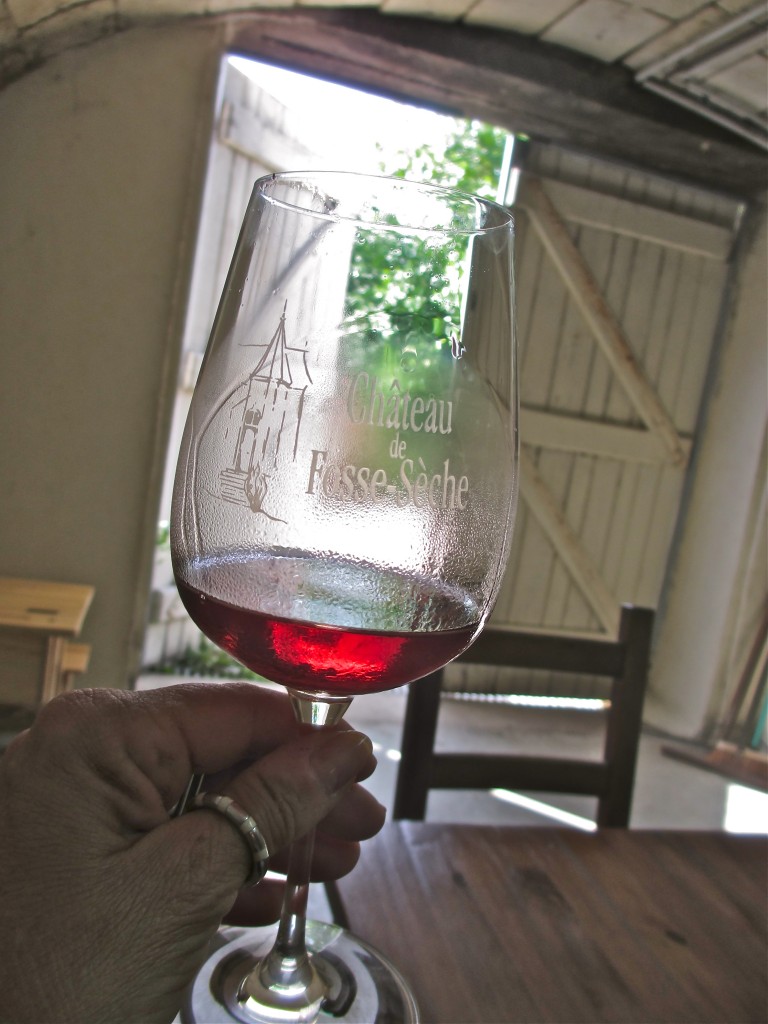During my recent trip to the Loire Valley, I visited a very special vineyard, where the environmental synergy is perfect harmony. That place is Château de Fosse-Sèche.
Located in the Saumur region of the Loire Valley, Château de Fosse-Sèche is unique for several reasons. First, it sits on the Brossay plateau with Jurassic soil that contains flint and not chalk, which is characteristic to the area. When flint soil is broken down, iron oxide is trapped inside it, thus adding minerality. Their position also provides wind, which warms the flint soil, thus adding these different aspects of their terroir into the wine.
Ongoing study of the Château’s geology…
This 45 hectare property (1 hectare = 2.47 acres) is also self-contained, surrounded by two oak forests and numerous hedges. The 17 hectare vineyard is certified “organic” and is the centerpiece of its own ecosystem that is being developed around it. There are 20 hectares of organic alfalfa for the feeding animals, and an organic milk farm is already on the property. Near term plans include adding a herd of 100-200 goats that will eventually provide milk for goat cheese production.
The pigeonnier and wildflowers…
The other interesting aspects of this unique property are the small open parcels that have been left wild for birds to nest safely and securely, and 5 hectares of land that have been left fallow to promote wild flower growth and attract pollinating insects to regenerate the ecosystem. Further, this plant material will ventilate the soil and generate seeds for the birds. These flowers also provide a home and food for wildlife because of the abundance of insects. There are some beehives on the property that benefit from all that has been done to develop and support this self-contained ecosystem. The Château has also added a pond to house fish, frogs, waterfowl, dragonflies, frogs and toads. The entire property has been declared a bird sanctuary to protect any endangered and wild creatures such as owls, swallows and bats.
The beautiful stained-glass window in the tiny chapel…
The cave at Château de Fosse-Sèche contains oak barrels but also 11 concrete fermentation eggs, which are becoming quite popular with winemakers in both the Old and New Worlds. The oval egg enables the juice to ferment better because the shape promotes better circulation. The concrete adds its own natural nuances to wine, but not oak and tannins, which are not always desired. But the eggs are quite expensive, €3000-€6000, ($3700-$7000) depending on the capacity.
Les œufs et les barriques!
As for the wines, the Château produces Chenin Blanc, including sweet and sparkling, a rosé, Cabernet Franc, Cabernet Franc/Cabernet Sauvignon Saumur Rouge blend and Cabernet Franc grape juice. I particularly enjoyed the sweet “Les Tris de la Chapelle and the Réserve du Pigeonnier Saumur Rouge blend.
Last, but not least, are the dogs of the Château, particularly the little tan guy who just showed up one day. He also knows that Château de Fosse-Sèche is a very special place.
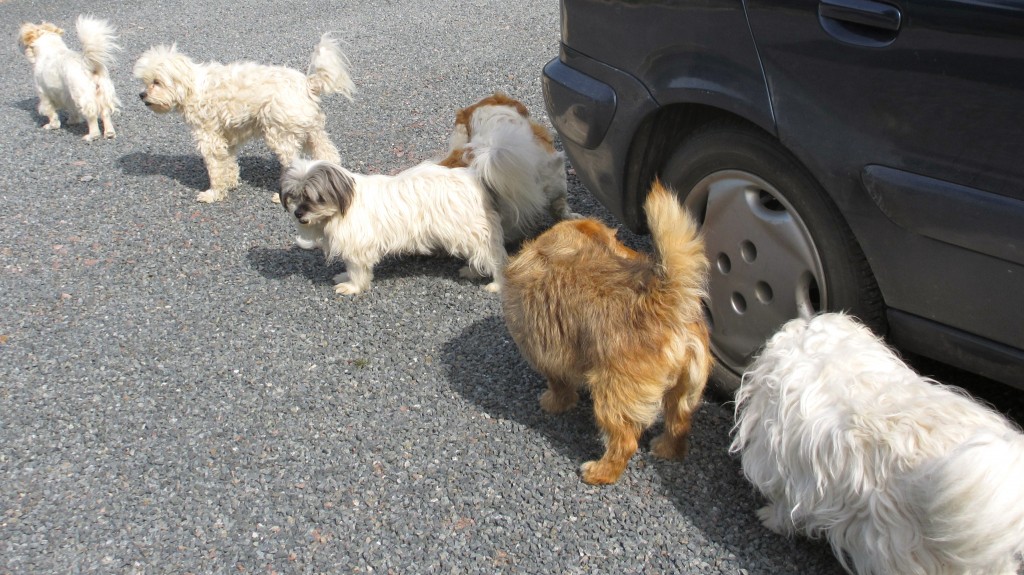
Until next time…à votre santé!
Photos by Christine Humphrey ©2012

